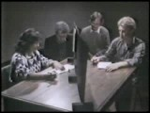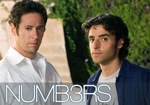 Ever played the electronic game 20Q? You think of any tangible object, and then it asks you questions. After 20 questions, often less, it guesses the object of which you're thinking.
Ever played the electronic game 20Q? You think of any tangible object, and then it asks you questions. After 20 questions, often less, it guesses the object of which you're thinking.
If you've never tried the game, or even if you have, try the free online version a few times before continuing with this article.
20Q's popularity owes much to the way the game builds. You start by wondering if it will get your item correctly. As you see the questions, you sometimes wonder what it is thinking. Often, the tension builds as you get closer and closer to the 20-question limit. Finally, it either misses your object, in which case you're happy that you could beat it, or it guessed your object, and you're left wondering how it could have possibly guessed that object.
How exactly does it work? By your questions, you're basically helping the 20Q work through a search tree. Even if the device only asked 20 questions and only had YES or NO buttons, then it would be able to distinguish 220 things, for a total of 1,048,576.
When most people understand that, even just over 1 million items doesn't seem enough to cover every possible object. Consider this, however: Your average standard reference dictionary contains almost every object that is going to be thought of for this game, and most dictionaries only contain 50,000 to 100,000 entries. Even the 2nd edition of the Oxford English Dictionary, which took up 20 volumes, contained “only” 615,000 entries, which is far less than 20Q's capacity.
There are a few other tricks used, as well. First, the limitation to tangible objects: not every word in a dictionary is a tangible object. You can eliminate words like a, an, the, adjectives like blue, hard, shiny, and so on.
Also, note that 20Q doesn't absolutely limit itself to YES or NO choices. Some versions include the choices: Yes, No, Unknown, Irrelevant, Sometimes, Probably, and Doubtful. This array of choices both narrows down the available choices and helps obscure the method.
While the popular versions of 20Q have only become available within the last decade, the basic idea is much older than that. The first popular computer game to guess what you're thinking of was already making the rounds in 1976!
The game was known as “Animal”, and one of the original BASIC listings is available here: Page 1, Page 2. Notice how short the listing is, as it only starts with 2 animals and 2 questions in mind. Even the capability to learn new things isn't that difficult to program.
An early computer magazine, Creative Computing (who also published the book containing the Animal listing above), published a detailed and thought-provoking article on the exact process of the Animal program, which became the basis for 20Q. The article is called Learning, Innovation and Animals, and is available online for free here: Page 1, Page 2, Page 3, Page 4, Page 5, Page 6.
The 20Q project itself in 1988, and was even admittedly inspired by animal. The database was developed by years of testing the program with people, and allowing them to add their own questions. Also, the idea of more human-seeming answers, such as Irrelevant, Doubtful, etc., were developed during this testing.
This is one of those rare times where the way the game was developed is almost as fun to explore as the game itself!


 It's Thanksgiving here in Grey Matters central, so this is going to be a quick post. I thought I'd share some quick card tricks with which you can entertain your family over the holiday weekend.
It's Thanksgiving here in Grey Matters central, so this is going to be a quick post. I thought I'd share some quick card tricks with which you can entertain your family over the holiday weekend. While doing research for my posts on
While doing research for my posts on  This is one of largest editions of
This is one of largest editions of 

 In my
In my 


